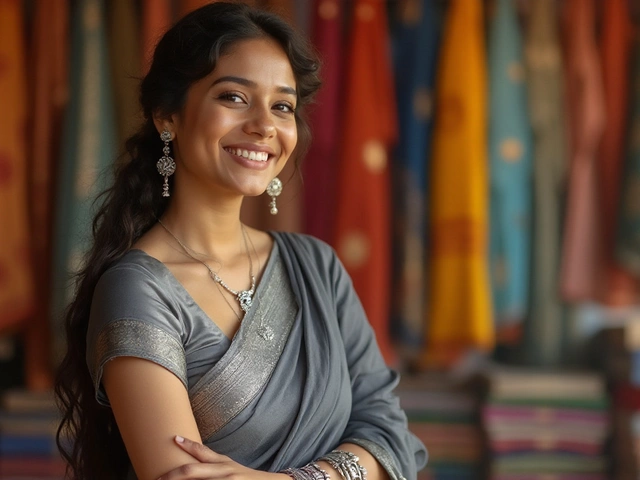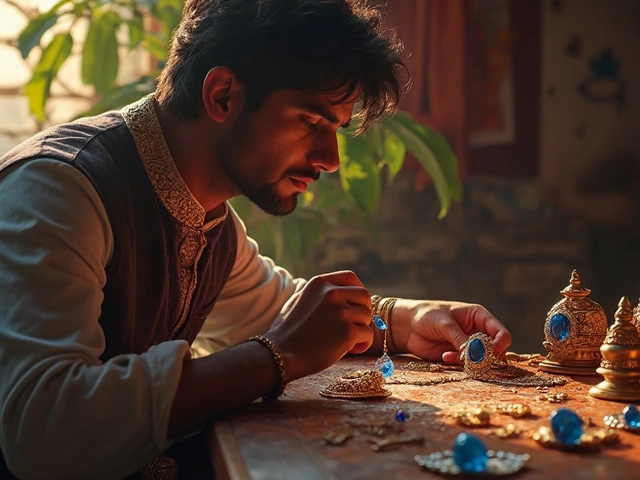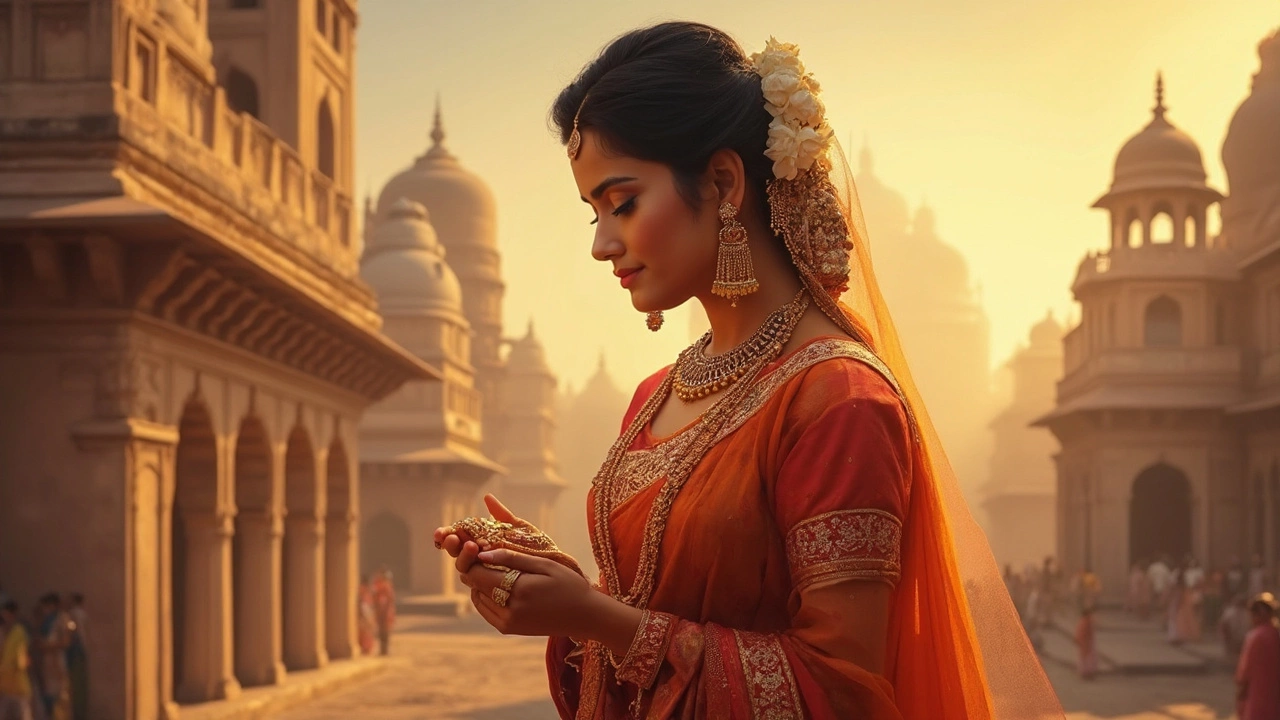
When it comes to the mangalsutra, there's a lot more than meets the eye. This small yet significant piece of jewelry not only adds charm to a woman's look but carries with it a legacy tangled in cultural significance. Traditionally, it's a symbol of marriage and is meant to be worn at all times by married women. But, with the world changing at a rapid pace, so do perspectives. Is it really a sin to remove it, or is it just another piece of jewelry?
Let's start by understanding why the mangalsutra holds such a special place in Indian marriages. This sacred thread symbolizes a woman's devotion to her spouse and is seen as a protective talisman for her husband's well-being. So, you might wonder, does removing it speak volumes about one's respect or lack thereof for traditions? However, many modern women find themselves questioning this old belief, balancing between maintaining cultural roots and embracing personal comfort.
As conversations grow around gender roles and personal choices, some have started to view the mangalsutra in a different light. While some women prefer lighter, more contemporary designs that suit their day-to-day activities, others choose to wear it only during special occasions. With countless stylish designs available today, the mangalsutra can also be a statement of personal style rather than just a traditional obligation. From classic gold to sleek diamonds, the options are endless, making it easier for women to express themselves with their jewelry.
- The Significance of the Mangalsutra
- Is Removing It Considered a Sin?
- Modern Mangalsutra Designs
- Balancing Tradition and Personal Style
- Navigating Cultural Conversations
The Significance of the Mangalsutra
The mangalsutra is not just a piece of jewelry; it's a symbol of marital harmony in many Indian cultures, especially among Hindu communities. This traditional accessory is usually worn by married women and is believed to bestow blessedness and security upon their marriage.
Historical Roots
Historically, the mangalsutra's roots trace back to South India, but it has since been embraced by communities across the country. The name itself comes from two Sanskrit words: ‘mangal’ meaning holy or auspicious, and ‘sutra’ meaning thread. Traditionally, it is made of a string of black beads interspersed with gold, believed to ward off evil.
Symbol of Love and Commitment
This jewelry isn't simply ornamental. It's exchanged during the wedding ceremonies and symbolizes the groom's love and the couple's commitment to each other. It's akin to a western wedding ring but carries deeper spiritual connotations for many.
Design and Material
Traditionally, the designs have been specific to regions. For instance, Maharashtrian mangalsutras feature a distinctive pendant called a ‘vatis,’ while Tamil versions often display the ‘thali,’ an emblematic charm.
- Made from gold and black beads.
- Designs vary across states and communities.
- Includes symbols or pendants with cultural meanings.
In recent years, designs have evolved to accommodate modern tastes. While the essence remains, women are opting for sleeker, more minimalistic versions that match their modern lifestyles.
Cultural Perspectives
The perception of whether or not it's a tradition or a modern-day style statement can vary. Some uphold it as a non-negotiable tradition and a tangible reminder of matrimonial vows, while others view it as an adornment to be worn at one's convenience.
| Cultural Region | Design Element |
|---|---|
| Maharashtra | Vati pendants |
| Tamil Nadu | Thali symbols |
As beliefs and practices evolve, the mangalsutra continues to be a subject of personal and cultural interpretation, reflecting the vibrant diversity of tradition and modernity in India.
Is Removing It Considered a Sin?
The question of whether taking off the mangalsutra is a sin taps into deep-seated cultural beliefs and personal opinions. Traditionally, the mangalsutra is considered a symbol of marriage integrity and the wife's commitment to her spouse. But times are changing, and so are the interpretations of such traditions.
The idea that it might be a 'sin' comes from historical practices where the mangalsutra was worn as a protective amulet. The practice was less about the ornament itself and more about the significance it carried. In certain communities, people believe that removing it might attract bad luck or unwanted attention, which makes the belief in its 'sinful' nature more emotional than factual.
The Changing Perception
Today, many young women view the mangalsutra as a personal choice rather than a strict obligation. The modern lifestyle, coupled with the demands of work and comfort, has motivated many to reconsider wearing it every day. This shift doesn't necessarily imply disrespect; rather, it highlights a change in how women express their marital status and personal style.
Cultural Contexts Matter
Traditions vary and so do interpretations. In some cultures, not wearing a mangalsutra after marriage is unheard of, while in others, it's less rigid. Some regions emphasize the significance heavily, whereas others adopt a more relaxed approach. It’s essential to understand these cultural contexts before labeling the act of removal as right or wrong.
Choosing to not wear it daily doesn't take away from one's commitment to marriage. Instead, it recognizes individual comfort and practical needs. If you're navigating this decision, it can be beneficial to have open conversations with family, considering both tradition and individual preferences.
Ultimately, whether removing the mangalsutra is deemed a sin is subjective and varies widely depending on personal beliefs and cultural background. It's a personal decision that often reflects a blend of tradition and modernity.
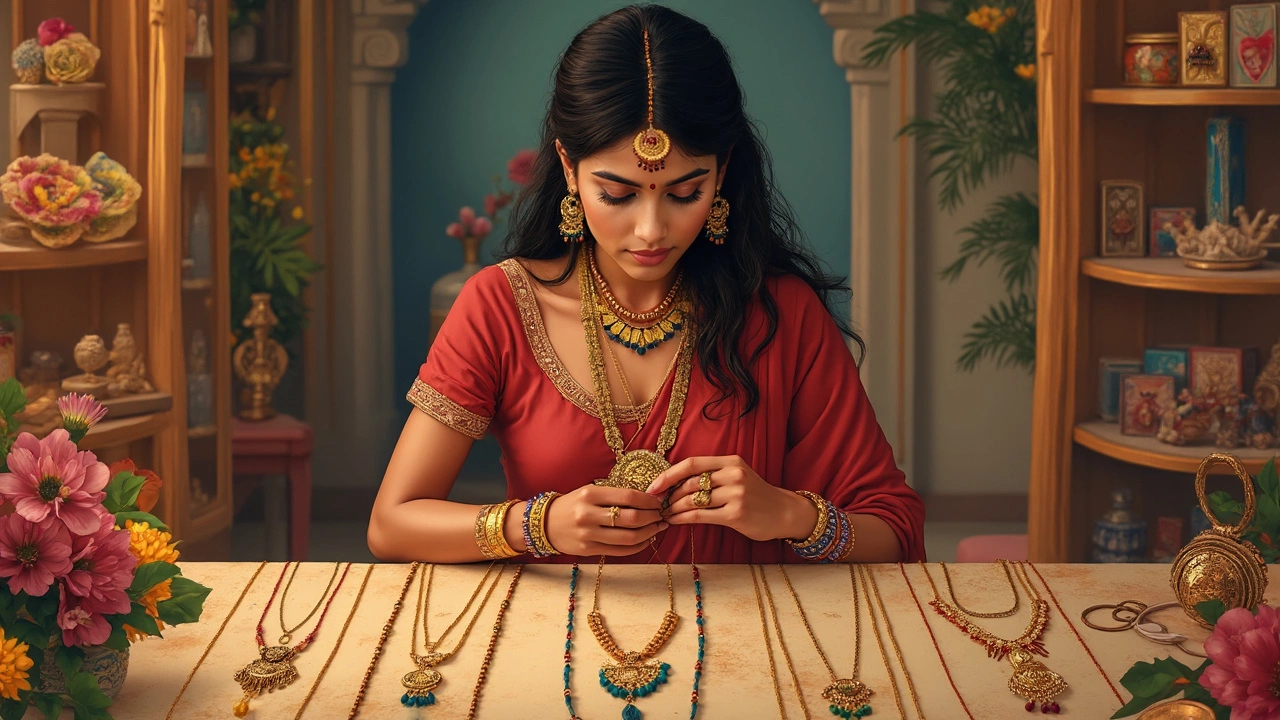
Modern Mangalsutra Designs
Today, the mangalsutra is no longer just about tradition. Thanks to modern jewelry trends, this symbol of marriage has undergone a dramatic style evolution. Designers are blending tradition with contemporary aesthetics, offering a wide range of stunning options that cater to different tastes and lifestyles.
Fusion of Tradition and Trends
Many young brides are opting for designs that are versatile and chic. Lightweight designs featuring delicate gold chains paired with precious stones like diamonds or simple beadwork are becoming popular. These keep the essence of tradition alive while allowing some room for personal expression. Whether you're dressing for a casual day out or a formal event, these new styles fit seamlessly into any wardrobe.
Minimalism in Mangalsutra
The minimalistic approach has captured the attention of the younger generation. Forget the bulky, traditional designs; today's mangalsutra designs are all about sleek, subtle sophistication. Thin chains with tiny pendants or just a few black beads can make a powerful style statement without being overwhelming.
Celebrity Influence and Inspiration
We've seen celebrities like Sonam Kapoor and Priyanka Chopra flaunting modern versions, setting trends for modern brides everywhere. Their choices reflect how the classic mangalsutra can be adapted to fit a global fashion sense while still respecting its cultural roots.
Customized for You
Customization is another exciting trend. Many jewelers offer personalized options, allowing women to choose everything from the number and arrangement of beads to the type of precious stones. This ensures that every piece is unique, reflecting not only the wearer's style but also her story.
The world of mangalsutra designs is vast and varied. With so many styles to choose from, this piece of jewelry is becoming as much about individual identity as it is about tradition. So the next time you're looking to update your collection, remember it's about finding something that speaks to you, as well as to your culture.
Balancing Tradition and Personal Style
Striking a balance between honoring traditions and showcasing personal style can be quite the juggling act, especially when it comes to wearing a mangalsutra. Historically, wearing the mangalsutra signified marital status and devotion. However, as times evolve, women are finding ways to keep this tradition alive while expressing their unique fashion sense.
Modern Design Innovations
Today, there are countless designs available that merge tradition with modernity. Jewelers have become creative allies for women seeking a blend of the two. Contemporary twists involve delicate diamond settings or minimalist chain designs. These styles not only honor the essence of the mangalsutra but also make it suitable for today's fast-paced lifestyle.
- Classic gold designs remain popular, integrating intricate patterns that reflect cultural heritage.
- Diamond-studded mangalsutras offer a modern flair, appealing to those who love a bit of sparkle.
- Sleek and minimalist styles are gaining traction, lessening the heaviness traditionally associated with this jewelry.
Personal Comfort vs. Traditional Expectations
Some women argue that wearing a mangalsutra can be cumbersome and doesn't align with their personal style or daily needs. Finding the right balance often means open communication with family members about personal choices and preferences.
Statistics show that about 60% of urban Indian women prefer lighter and more wearable mangalsutras that don't interfere with daily tasks, as noted by a survey on urban fashion trends in India. This reflects a shift in how cultural symbols are being adapted to fit modern lives.
Key Tips for Balancing
- Discuss your preferences with your spouse and family to find common ground.
- Explore various designs and choose one that complements your wardrobe and lifestyle.
- Wear your mangalsutra as per your comfort, maybe on special occasions if daily wear is impractical.
Ultimately, wearing a mangalsutra is a personal choice that can honor tradition while embracing modernity. It's all about finding what makes you feel connected, stylish, and comfortable every day.
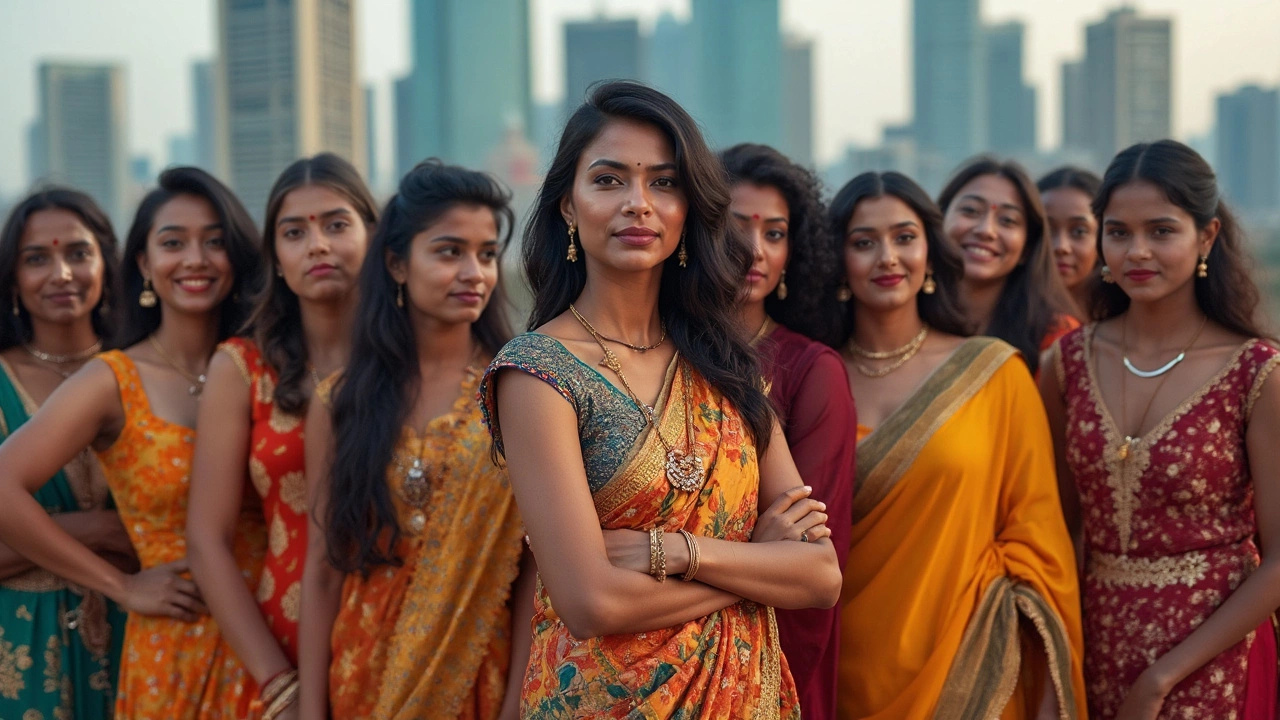
Navigating Cultural Conversations
Talking about the mangalsutra and its significance in today's world can sometimes feel like walking a tightrope. On one side, there's respect for tradition, and on the other, personal choice and modern values. It's about finding that sweet spot where both can coexist without stepping on toes.
The Generational Gap
Often, older generations hold firm to the belief that a married woman should consistently wear her mangalsutra. They see it as a non-negotiable part of her marital identity. Expressing the idea of not wearing it might be met with resistance from grandparents or parents who grew up with rigid gender norms.
On the flip side, younger generations might lean towards flexibility. They could view this tradition through a different lens, prioritizing comfort or personal expression over strict adherence.
Finding Common Ground
Some helpful tips for navigating these tricky waters include starting with an open conversation. Share personal reasons with family members about why you choose to wear or not wear your mangalsutra. This could be about how it fits into daily life or personal comfort levels. If elders are part of cultural or religious communities, it might help to seek their leaders' perspectives, especially those who embrace modern contexts.
| Age Group | View on Mangalsutra |
|---|---|
| 18-25 | Flexible, often consider comfort |
| 26-40 | Balancing tradition with personal style |
| 41+ | More traditional, prefer adherence |
Adapting to Modern Lifestyles
One practical approach is to find designs that meld tradition with style, offering options that suit different occasions. Whether it's a simple pendant for everyday wear or an elaborate piece for special events, the design can play a huge role in keeping everyone happy. Fashion houses are now designing mangalsutras that cater to both traditional and modern tastes, ensuring they complement any wardrobe.
In essence, having an honest and empathetic conversation can bridge the generational gap. It's about understanding each other and finding solutions that respect both cultural traditions and personal preferences.
